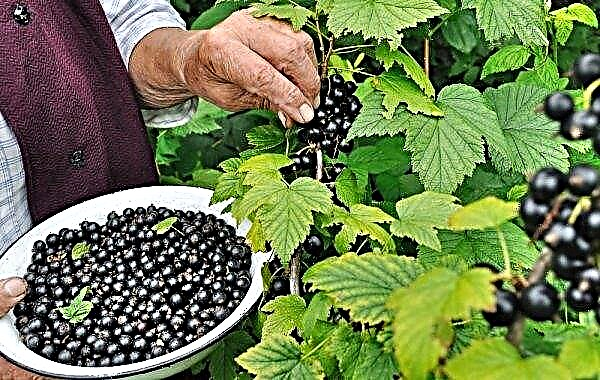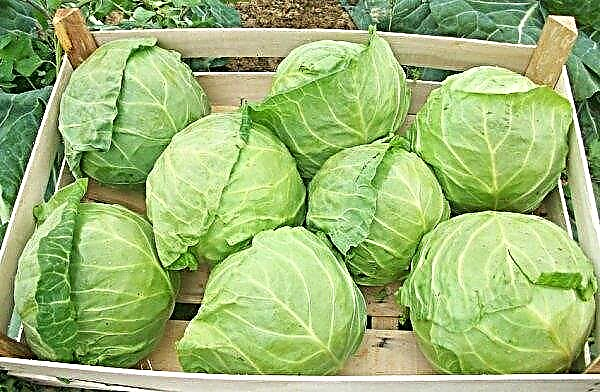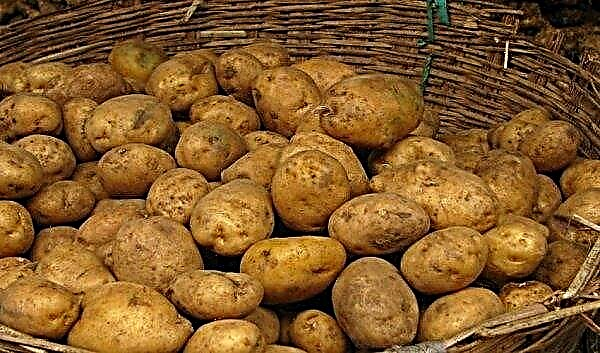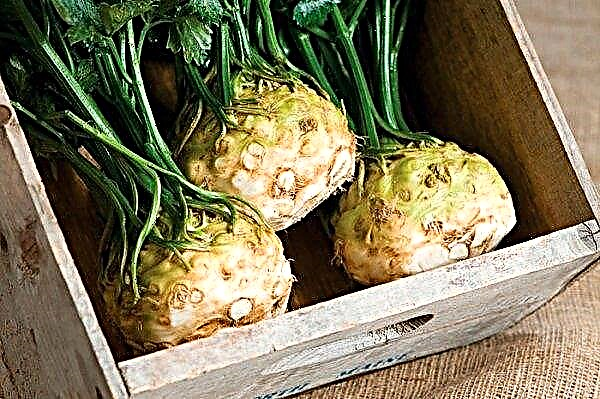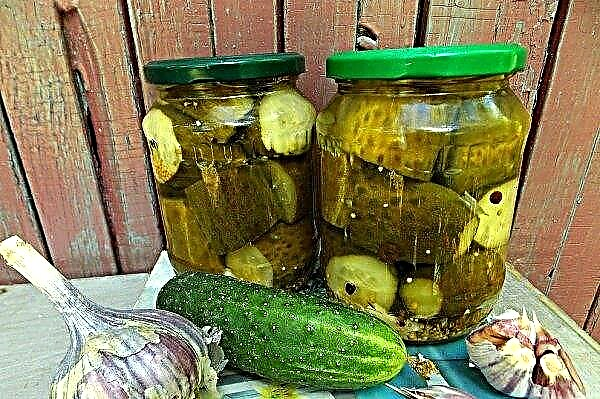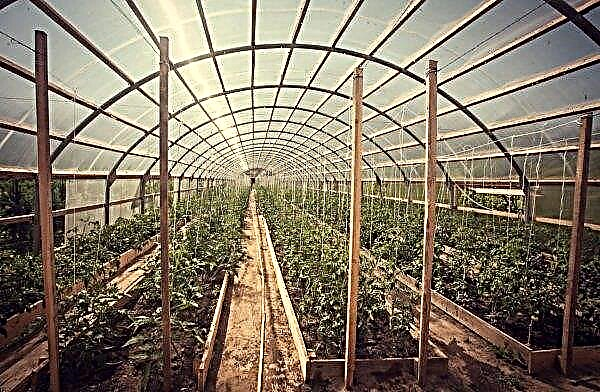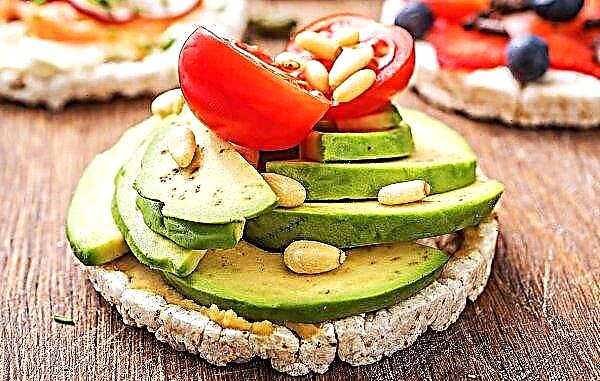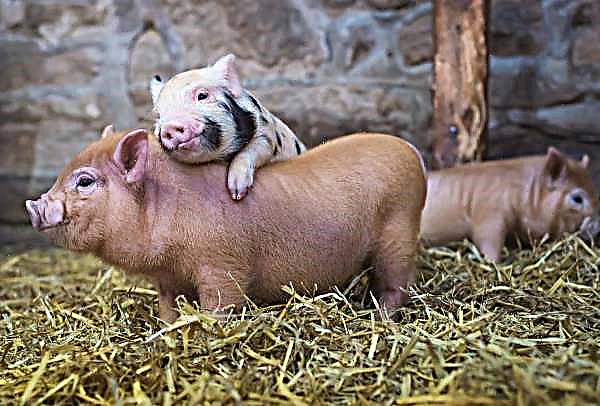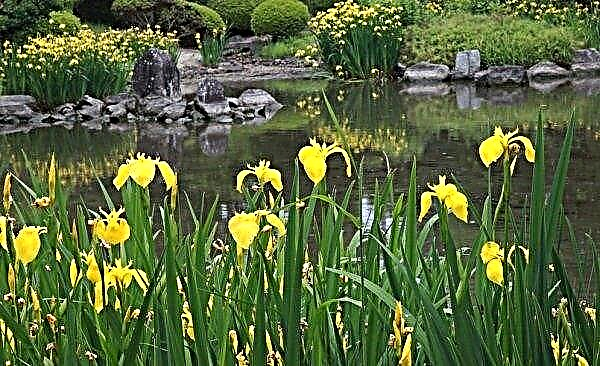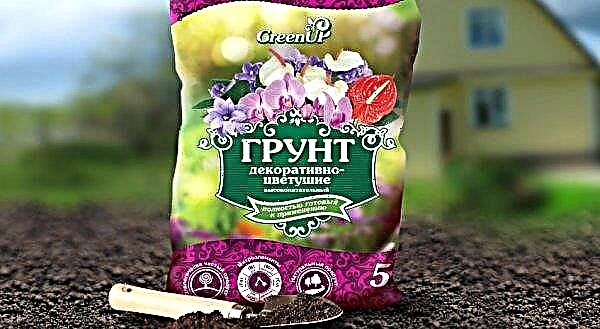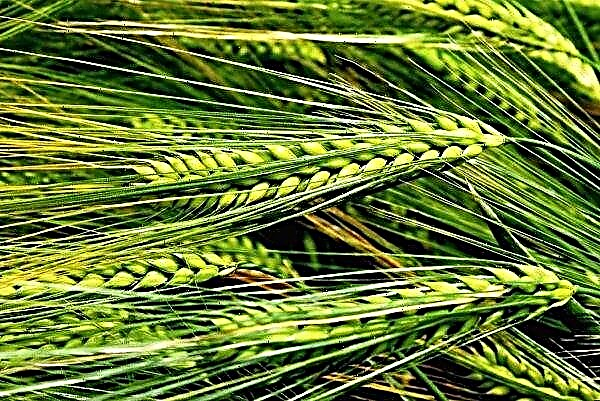Phacelia refers to annual herbs with a long flowering phase. It is valued for its decorative effect, it is actively used as a honey plant, fodder crop and green fertilizer. When to sow phacelia and what conditions are needed for its cultivation, read below.
Botanical description of the plant
Phacelia came to us from America. The view includes many varieties. Only 4 species are especially valued on our continent. In Russia, the plant is cultivated everywhere, except for the dry steppe regions and the Far North. The stem of the plant is erect, juicy, large. It reaches a height of 60–90 cm. The leaves are arranged alternately, painted in green, less often with a bluish tint. Cirrus dissected leaves. Fractions of linear or oblong type. On the leaves and stalk there are hard frequent villi.
Did you know? Phacelia nectar produces not only in the daytime, but throughout the flowering period around the clock.
Phacelia flowering begins 30–40 days after sowing seeds. After another 2 weeks, mass flowering begins, lasting 2-3 weeks. Flowers grow from spike-shaped inflorescences - brooms. Inflorescences are often bifid, twisting spirally at the apex. Corollas of flowers have the shape of bells 6–9 mm long. Painted pinkish blue.

The stamens connected to the basal corollas extend far beyond them. The honey productivity of phacelia directly depends on the weather and varies between 500–1000 kg per ha. After flowering, fruits are formed, which are egg-shaped boxes. The top of the fetus is covered with white pile. The disclosure of the fetus is bivalve.
Useful properties of Phacelia honey
In its value, honey made from phacelia nectar is similar to linden. The products are almost colorless, viscous, thick, with a slight greenish tint. It crystallizes in 4-6 weeks. After this process, it acquires the consistency of a dough with a crystalline structure and white color. Phacelium honey has a high content of beneficial micro and macro elements, as well as essential amino acids, enzymes and vitamins.
Did you know? The bee has 5 eyes, which have their own characteristics of displaying the surrounding world: because of them, insects are best able to distinguish between flowers in blue, white and yellow.
- Its use in strictly dosed quantities allows you to solve most health problems and improve the general condition of all organ systems:
- boosting immunity;
- improving the condition of the skin;
- restoring the carbohydrate balance and the digestive tract;
- improving the condition of the nervous system.

Honey from phacelia is actively used in cosmetology, food industry and for medicinal purposes, such as:
- expectorant;
- warming;
- wound healing;
- stimulating regeneration at the cellular level.
Types of Phacelia
The following types of phacelia are cultivated on our territory:
- Tansy - culture of decorative and agricultural purposes. On tall (50–100 cm) fleshy stems, bell-shaped flowers with a diameter of 2 mm in blue-gray color are formed. For rapid development, the plant needs plenty of light. It can grow even on scarce, not fertilized soils.
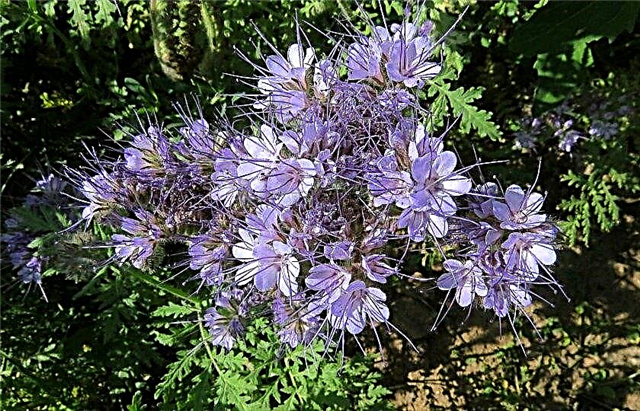
- Bell-shaped - low grass, the height of the stems reaches only 25 cm. They are painted in reddish green. Leaves are arranged alternately. Unlike other species, at their ends are frequent teeth and a blue-green border with a reddish tint. Flowers are dark blue bells, darker at the base, 3 cm in diameter. Flowering lasts 40 days.
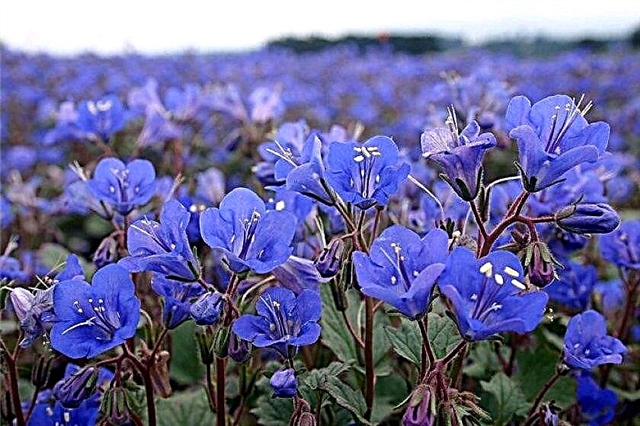
- Twisted - plant height 50 cm. Leaves are soft, pubescent, light green in color. The flowers are small - with a diameter of 5 mm, blue. The plant is characterized by long flowering - from the beginning of June to the onset of frost. After flowering, decorative seed bolls are formed on the stems.

- Pursha - plant height up to 50 cm. Flowers outside are covered with purple spots, inside are completely white. In diameter, the flowers reach 3 cm. The plant blooms throughout the summer. It grows only in areas protected from drafts and wind, well lit by the sun.
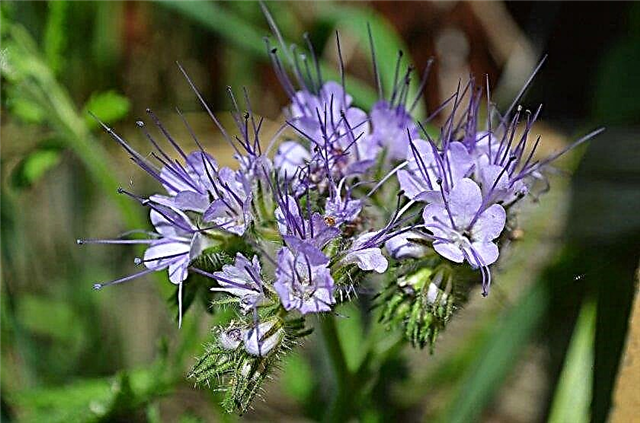
Universal qualities of a plant
Phacelia is not only a honey plant that is attractive to bees.
The plant is also used as:
- green fertilizer;
- decorative element in landscape design;
- feed crop.
Green manure
Phacelia is a siderat plant. It can be sown in completely depleted areas, and then sow the main culture. In this case, the seed sowing procedure begins with the onset of heat. After emergence, the main care consists in high-quality loosening of the soil and moistening as necessary.
Important! In addition to honey insects, phacelia also attracts carnivores, which is very beneficial for farmers. Having planted phacelia next to the garden or directly between the beds, you can forget about the parasites that predatory insects will feed on for a long time.
Over time, the need for loosening disappears: plants begin to actively displace weeds, and their root system, growing, itself performs this function, enriching the soil with oxygen. During the season, you can get several cuts of phacelia greenery for planting it in the soil and producing high-quality compost.
Honey plant
Phacelia itself does not grow in the wild. It is sown on purpose, doing this if possible several times a season. By productivity, the plant is one of the leading honey plants. A bee can collect up to 5 ml of nectar from one flower. Pollination of this plant occurs even after sunset.

Ornamental plant
As a decorative culture, phacelia goes well with any other flowers.
In landscape design, she emphasizes favorably:
- decorative flower bed or flower bed;
- border design - low-growing varieties are more suitable;
- design of arbors and terraces - plants planted in hanging planters are suitable.
Forage crop
As a forage crop, phacelia is not very well eaten by horses, cows because of the severe pubescence of the stem and leaves. The feed value of the plant decreases with the beginning of flowering. Most often cultivated as a cut-off, crop crop. It is quite difficult to prepare hay from it, so phacelia is often used in silage. Freshly eaten relatively well by pigs.
Growing, caring and receiving phacelia seeds
There is no particular difficulty in caring for the plant in question.
On what soil is better to grow
Phacelia is absolutely not demanding on the quality and nutrition of the soil. It can develop equally well on waterlogged or overdried soils, as well as on hard rocky areas.
Planting
Sowing dates depend on the purpose of cultivation. Before sowing, it should be borne in mind that flowering occurs 30–40 days after sowing seeds. For example, to achieve flowering in mid-June, sowing is carried out in early May. In order to close the non-breeding season in early June, sowing is carried out in October, taking into account weather conditions (so that the seeds do not sprout ahead of time). In this case, flowering will begin in early June, or even earlier.

The seeds are buried in the soil by 1.5–3 cm. No special preparation is required for the seeds or the site. However, when planting in the spring, in the autumn, it is necessary to cultivate the soil to a depth of 20 cm and 3 weeks before planting to a similar depth. If the soil is too dry, then it is better to water it a week before sowing - 10 liters of water per 1 m². Immediately before landing, the site is leveled and furrows are made on it at a distance of 15 cm from each other.
On 1 ha of land, 10 to 12 kg of seed is required. Seeds are laid out at a distance of 5 cm from each other. In large areas, it is better to use a cultivator equipped with a seeder. The main task after sowing is to cover the seeds well with soil, otherwise they will not sprout. If the goal is to grow plants for seeds, then the distance between the rows should be 45 cm.
Did you know? Honey is obtained as a result of partial digestion of nectar in a goiter of a honey insect.
Crop Care
Phacelia does not require special care. Before emergence of shoots it is necessary to organize high-quality watering. Best of all, if it is a drip system, and the soil moisture is kept at around 60% all the time, this will accelerate the emergence of seedlings. With the advent of sprouts, watering is slightly reduced, and the main emphasis is on loosening the soil between the rows.
Once the plants have reached a height of 15 cm, you can abandon the cultivation procedure - phacelia will do it on its own. Watering can be carried out once a week for 10 liters of water per 1 m². As a fertilizer, you can use liquid mullein diluted with water 1: 5, under the root. This top dressing can be carried out at the beginning of the growing season, 1 week after emergence.
Important! At the initial stages of development, phacelia is not able to cope with weeds, therefore, their high-quality removal during the first weeks from the appearance of seedlings is a mandatory event.
In addition to manure, feeding with a solution of wood ash will be effective - both under the root and on the sheet:
- 400 g of ash are added to 10 liters of water and boiled for 15 minutes;
- after that, the solution is filtered, cooled and irrigated or sprayed;
- for the entire growing season, 1-2 feeding will be enough.
If the soil on the site is not depleted, then feeding phacelia is not required at all. Plantings intended for the production of seed material require more careful care: they need to weed throughout the entire growing season.
Seed collection
One of the important stages in the reproduction of phacelia is the proper collection of seed material. Seed collection begins when the lower part of the seed box turns brown. 
The procedure is carried out separately, that is, seeds are taken only from the bottom of the plant. This is due to the fact that ripening occurs unevenly from the bottom up, so when the lower seeds are already ripe, the upper ones remain green. After collecting, the seeds are cleaned of films, screened and dried. The moisture content of the dried raw materials should be 14%.
Possible growing problems
Phacelia is one of the few plants that are not exposed to diseases and pest attacks. The only problem that can occur with an excess of moisture is rotting of the root. In this case, it is better to remove wilted specimens and dust the soil with wood ash at the rate of 200 g per 1 m².
Phacelia is a universal plant, which is simultaneously green manure, honey plant, fodder and ornamental culture. It is completely not demanding in care, is not subject to diseases and pest attacks, it develops well even on scarce rocky soils.





